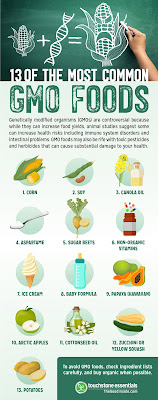By Theodora Filis
The Food and Drug Administration (FDA) is preparing to approve genetically engineered (GE) salmon for human consumption. If approved, the salmon would be the first GE animal on the market. Because the agency is unlikely to require the salmon to be labeled as GE, consumers will have no way of knowing whether the salmon they buy is engineered. The salmon contains genetic material from an eel-like fish, called an ocean pout, and another species of salmon and grows to market size more rapidly than a normal Atlantic salmon.
Consumer groups are concerned that scientists and the public have been given very little time to weigh in on the approval process and that the environmental and human health risks of the GE salmon, including harm to wild fish stocks and effects on human health, have not been properly assessed.
To complicate matters, the agency is evaluating the GE salmon under its industry-friendly drug approval law, which is not suited to oversee GE animals, especially those raised as food.
"We need to regulate this product in a way that will protect consumer choice and wild fish populations. That means labeling the fish and enforcing strict environmental conditions for rearing them." ~ Margaret Mellon, Food & Environment Program Director
Genetically Engineered Corn
Farmers are finding it more difficult to buy corn and soybean seed that is not genetically engineered. According to a recent poll, nearly 1/3 of farmers would like more opportunities to buy non-GE seeds, but consolidation in the industry has narrowed seed company offerings.
Using biotechnology and genetic transfers, Monsanto, the world's largest seed company, hoped to create a corn variety that could grow well in dry conditions, even in drought-prone Africa, helping to alleviate hunger and poverty -- and fatten its bottom line.
However, early 2010 harvest data show that Monsanto's new elaborately engineered SmartStax corn seeds—advertised as the highest yielding varieties available—are producing less than the company had predicted. SmartStax corn is engineered with an unprecedented eight genes for insect resistance and herbicide tolerance, but its yields so far are lower than those of Monsanto's older, cheaper three-gene varieties.
This and other recent GE flops are fueling resentment among farmers, who are asked to pay ever higher prices for each new engineered variety.
The backlash comes on the heels of a 2009 UCS report, Failure to Yield, which found that genetic engineering has not contributed substantially to increases in U.S. corn and soybean yields over the past 13 years.
"Feeding the world's population without degrading our environment is a critical problem facing humanity. To solve it, we need to bring together farmers, ecologists, economists, social scientists, and policy makers to address not just how much food we grow, but where and how we grow it." ~ Noel Gurwick, Senior Scientist, Food & Environment Program
The South African supermarket-chain Woolworths already banned GM-foods from its shelves in 2000. However South African farmers have been producing GM-corn for years: they were among the first countries other than the United States to start using the Monsanto products.
The South African government does not require any labeling of GM foods (corn is the main staple food for South Africa's 48-million people). The three maize varieties which failed to produce seeds were designed with a built-in resistance to weed-killers, and manipulated to increase yields per hectare.
Monsanto blames the failure of the three varieties of corn planted on these farms, in three South African provinces, on alleged 'under-fertilization processes in the laboratory". Some 280 of the 1,000 farmers who planted the three varieties of Monsanto corn this year, have reported extensive seedless corn problems.
"We have been warning against GM-technology for years, we have been warning Monsanto that there will be problems,' said Marian Mayet director of the Africa-Centre for Biosecurity in Johannesburg. She calls for an urgent government investigation and an immediate ban on all GM-foods in South Africa, blaming the crop failure on Monsanto's genetically-manipulated technology.
"Monsanto is merely trying to hide its profit motive behind a mask of altruism," said Andrew Kimbrell, executive director of the Center for Food Safety, a private advocacy group. "Monsanto has a long history of putting profit before the welfare of people and communities."
Monsanto, ever on the lookout for a new financial opportunity found one in biofuels. The growing of corn, in Monsanto's case, genetically engineered corn, for the production of ethanol so they can do their part to reduce the use of fossil fuels.
Am I the only one who feels like Monsanto is selling us swampland in Florida? What's next, genetically engineered people? Shhhh, don't give them any more ideas...





